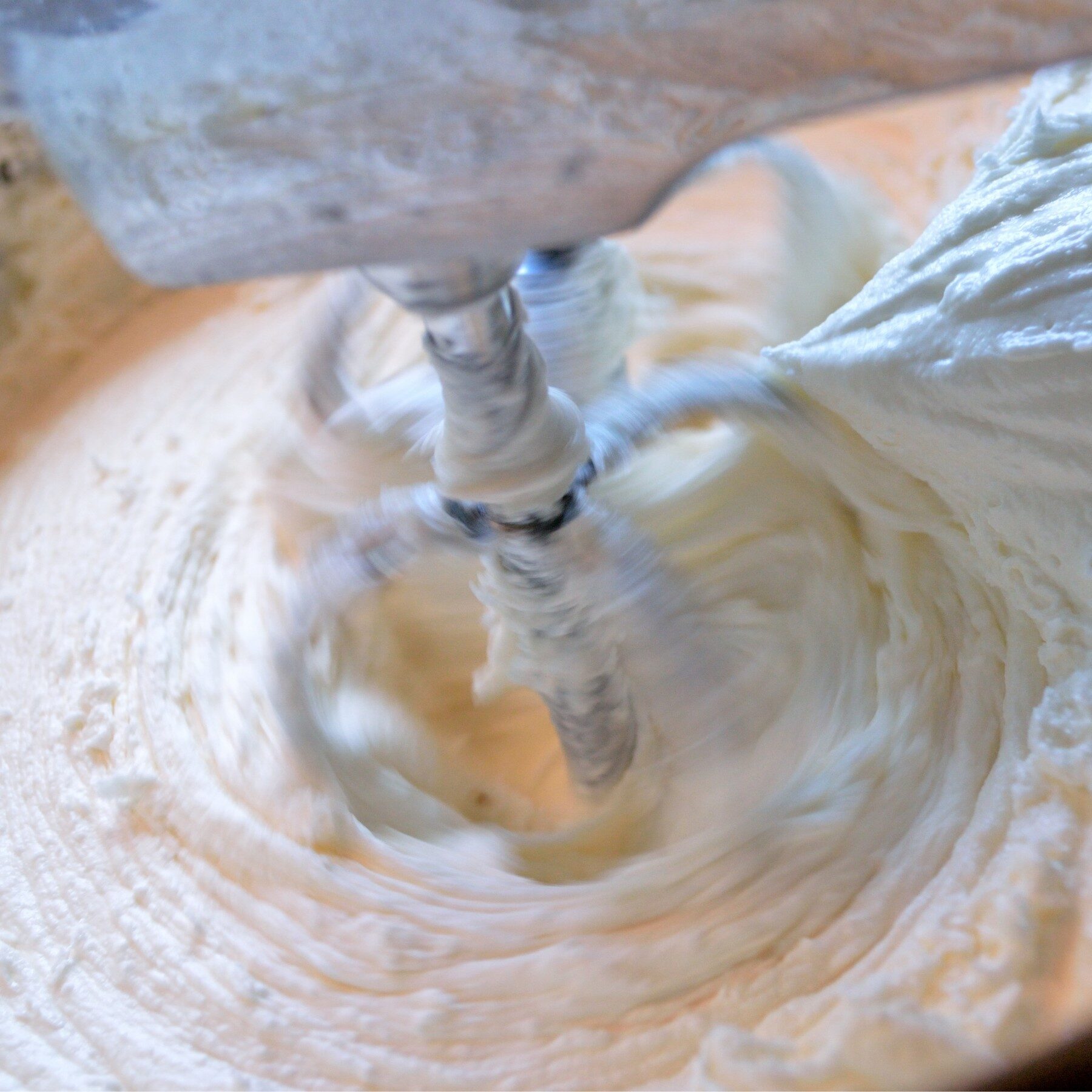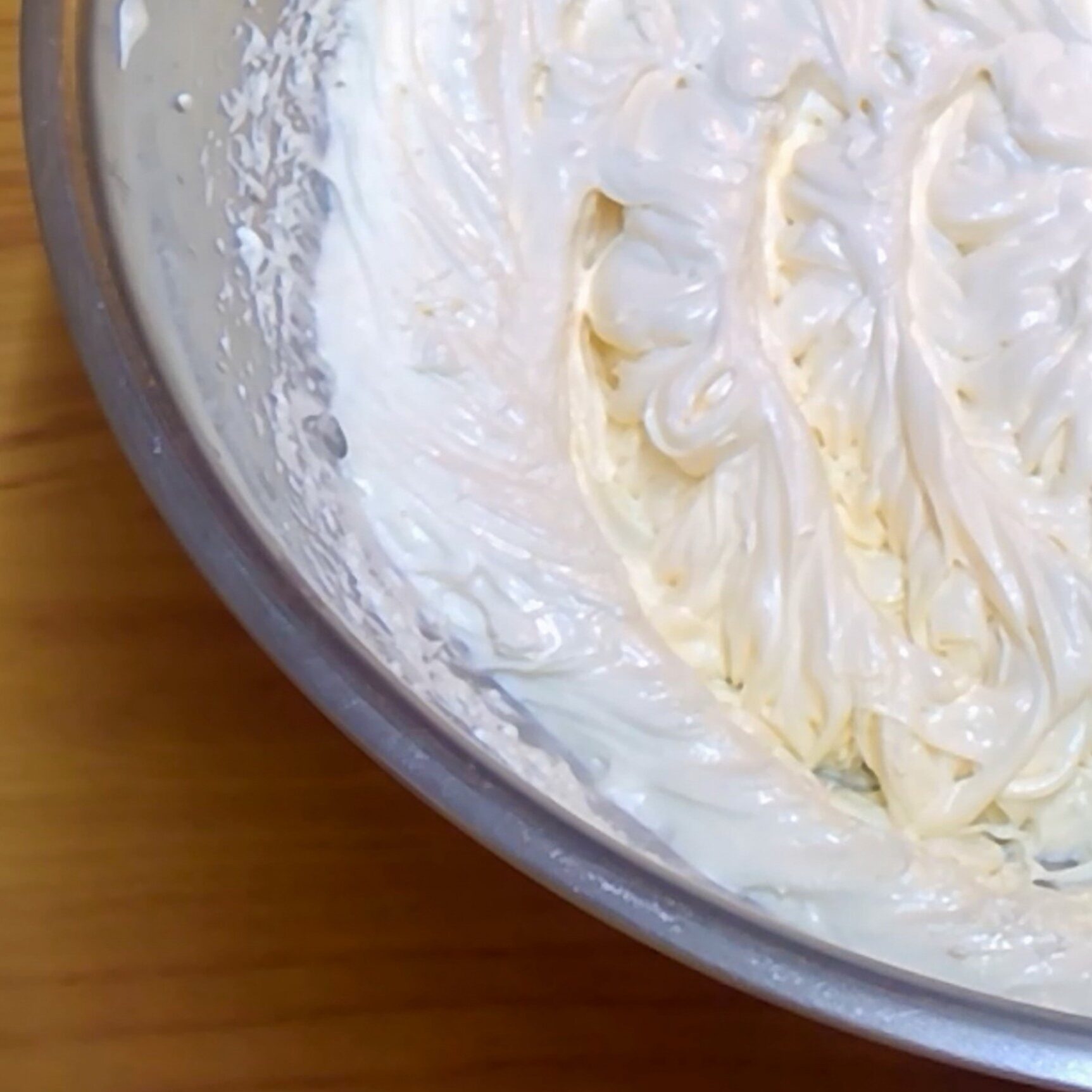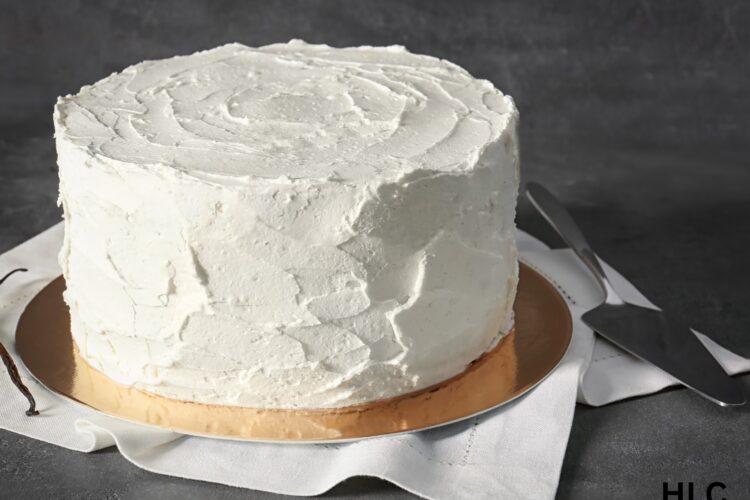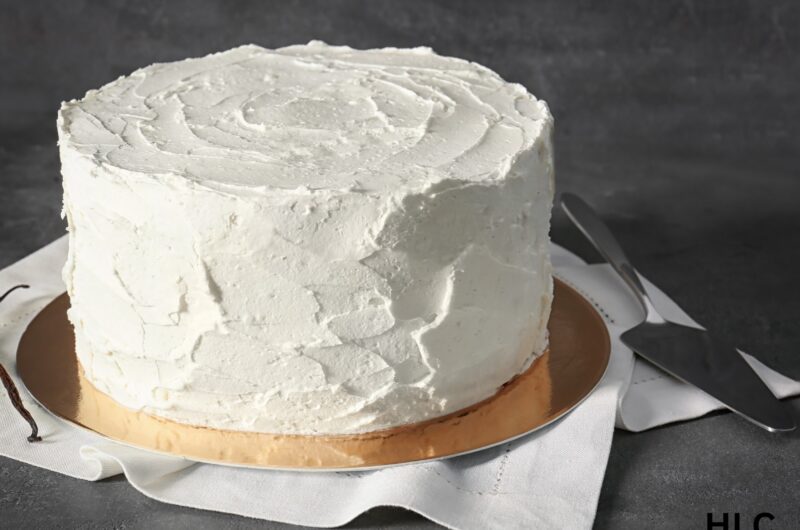This Vanilla Low Carb Buttercream Frosting Recipe should always be a staple to keep on hand. Or, if you will, lick straight from the spoon! Its so good!!
Jump to Recipe Print RecipeIt’s just a go-to recipe to always keep on hand Vanilla Keto Buttercream Frosting. Not bland, but not fancy or complicated. Just creamy, smooth, rich, and melty in the mouth while sturdy enough to hold up in piping and designs.
Ingredients
Here are the simple ingredients you’ll be using:
- Unsalted Real Butter– Preferably grass-fed, so make sure it’s at room temperature.
- Full-Fat Cream Cheese– Do not use any cream cheese spread. Spread cream cheese will give you runny frosting!
- Keto Powdered Sweetener– Any sugar-free powdered sweetener works, but I prefer powdered monk fruit/allulose blend because it dissolves really well and has no aftertaste!
- Pure Vanilla – If you have pure vanilla, use it; otherwise, imitation works too.
- Heavy Whipping Cream – This makes the keto frosting extremely smooth and creamy. If you need to substitute, you can for non-dairy milk or coconut milk.
- Sea Salt- Tones down the sweetness a little.
Tip: Even if you don’t have a dairy restriction, I recommend unsweetened non-dairy milk because milk contains a decent number of carbs to begin with.

Frequently asked questions
Why is cream cheese included in a buttercream frosting recipe?
I need cream cheese to make the frosting creamy and not grainy. This powdered monk fruit/allulose sweetener dissolves beautifully, but still slightly grainy in frostings, which cream cheese fixes.
Does it have the creamy texture of cream cheese frosting?
While there is a suggestion of cream cheese, there’s much less cream cheese than in more traditional cream cheese frosting, so this is essentially an old-fashioned buttercream taste.
Here’s why you’ll love this Keto Vanilla Buttercream Frosting recipe:
1) Super creamy and smooth . 2) NO aftertaste! 3) Rich vanilla taste. 4) Sturdy enough for piping and designs.
Troubleshooting
The butter is the heart of this sugar-free vanilla frosting recipe. It has to be taken out and softened to room temperature. Do not take it out too far in advance, though, or it will come out wrong.
If it’s too runny, it won’t maintain its shape. You’re going to have to begin all over
Too cold and it’s clumpy
If this does occur and your frosting is all clumpy, just zap the buttercream in the microwave for about 5 seconds. Upon slightly warming the butter, it should blend perfectly!
To get the butter at the ideal temperature, I love this tutorial from Sally’s Baking Addiction on how to soften butter quickly for perfectly softened butter.
Keto sweetener
I use powdered monk fruit with allulose for the sweetener. Any keto powdered sweetener will work, though. It tastes exactly like powdered sugar-no aftertaste and dissolves a million times better than any other sugar-free sweetener I can think of.
Even so, because we are using the powdered monk fruit with allulose that actually dissolves very well, it still sometimes leaves a very slightly grainy texture. For that reason, we add in some cream cheese, which solves that problem.
For more about the advantages and disadvantages of each one of the keto sweeteners, you can check out this Ultimate Guide To Keto Sweeteners!
How to Use a Ziplock Bag for Piping Frosting
If you don’t have a fancyicing bag, there is nothing to worry about, piping frosting using a Ziplock or plastic bag is quite easy! Here are the simple steps:
1. Take a large plastic baggie and cut out a very small piece off the bottom corner, and insert the piping tip into this cut corner.
2. Insert the cup with piping tip down into the baggie.
3. Wrap the extra baggie over the external part of the cup.
4. Fill in with frosting.
5. Take the baggie out of the cup and try to squeeze the frosting towards the tip of the baggie while being careful to expel any air.
6. Straight upright take the baggie in the hand and pipe the frosting onto the cupcakes – very easy!!! She fills the baggie with frosting using her hands and rest the bag in the cup while I freeze my bag for the frosting. But whatever method one chooses, it will be fine!

Substitutions for dairy-free
For dairy-free and vegan: You simply can use dairy-free butter, Daiya cream cheese, and canned coconut milk or non-dairy milk. Using Daiya cream cheese will give it a slightly stronger taste as cream cheese, so you may need a little more powdered sweetener to thicken.
Coconut milk: If you’re using coconut milk, I like full-fat Thailand Kitchen, Sprouts, or Native Forest Brands as it really doesn’t have an aftertaste from other brands. You can scoop out the cream and use it if it separates into solids and liquids, but you may have to add a little more to thin out the frosting or mix in some non-dairy milk from a carton.
Storage
Make-Ahead: Prepare the low-carb frosting on the same day you frost the cake or cupcakes. However, you may store it in the fridge until up to 1 week tightly covered. Just re-beat before using the frosting.
Storage:
The frosting can be stored on the frosted cake or cupcakes at room temperature for 1 to 2 days or for up to 1 week tightly covered in the fridge.
Freeze: Place it in a freezer-safe baggie, push the air out and freeze up to 3 months. Thaw overnight in the fridge and soften to room temperature to use. Wrap the already frosted cakes and cupcakes as follows; wrap the sliced cake or cupcakes separately in plastic then place them in the freezer safe baggie for up to 3 months. Thaw in fridge before consuming.
Pro tips
Softened butter is a must! To get your butter at the right temperature, check out this great tutorial from Sally’s Baking Addiction on how to soften butter quickly for perfectly softened butter.
If the frosting won’t come together: If this happens, then the butter is too cold. Take the frosting out and pop it into your microwave for just a few seconds (be very careful not to melt it!) so the butter will soften up enough for the frosting to come together.
Too runny frosting: If the frosting is too runny, it may be that the butter is too soft. That can be easily remedied by adding a bit more powdered sugar.
I use powdered monk fruit with allulose for the sweetener. It tastes precisely the same as powdered sugar with NO aftertaste and dissolves so much better than any other keto sweetener. Any keto powdered sweetener may be used.
Cream cheese is required to make the frosting creamy rather than grainy. Powdered monk fruit/allulose sweetener dissolves well compared to other keto sweeteners, but the texture in frosted frostings remains ever so slightly grainy, which cream cheese smooths out.
There’s a slight cream cheese taste in the frosting; however, there isn’t as much as there would be in a traditional cream cheese frosting to keep a classic buttercream taste.
Vanilla Keto Buttercream Frosting Recipe
Course: DessertCuisine: AmericanDifficulty: Easy12
servings10
minutes10
minutes176
kcalThis Vanilla Low Carb Buttercream Frosting Recipe should always be a staple to keep on hand. Or, if you will, lick straight from the spoon! Its so good!!
Ingredients
1 Cup Unsalted Real Butter
8 oz Block Full-Fat Cream Cheese
2 Cups Keto Monk Fruit/Allulose Sweetener
1 tablespoon Pure Vanilla
4 Tbsp Heavy Cream – or unsweetened non-dairy milk
pinch Sea Salt – optional
Directions
- Allow the butter to reach room temperature as well as the cream cheese to soften. You can even take it out of the packaging and put it in the microwave for 5 to 10 seconds. Then, using a handheld or stand mixer with a paddle attachment, beat the butter and cream cheese till smooth. It should take about 2 minutes.
- Add powdered sweetener, vanilla, and heavy cream. Beat on low speed till well combined about 30 seconds.
- Increase the speed to high and beat for 3 full minutes till frosting is very creamy and smooth. If too thin, add more powdered sweetener; if too thick, add more cream. For less sweetness, add a pinch or two of sea salt.
Notes
- DIET: Dairy-Free, Gluten-Free, grain free, Keto, Low-Carb
Nutrition Facts
12 servings per container
- Amount Per ServingCalories176
- % Daily Value *
- Total Fat
17g
27%
- Saturated Fat 11g 56%
- Trans Fat 1g
- Cholesterol 50mg 17%
- Sodium 270mg 12%
- Potassium 62mg 2%
- Total Carbohydrate
20g
7%
- Dietary Fiber 18g 72%
- Sugars 1g
- Protein 3g 6%
- Vitamin A 556%
- Vitamin C 1%
- Calcium 74%
- Iron 1%
* The % Daily Value tells you how much a nutrient in a serving of food contributes to a daily diet. 2,000 calories a day is used for general nutrition advice.

